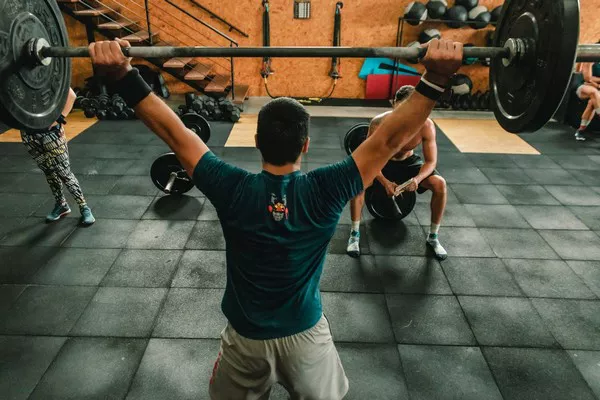Cardio stamina is the hidden engine behind every athletic feat, from running a marathon to dancing all night or simply walking up the stairs without gasping for air. When your cardiovascular endurance is high, your heart, lungs, and muscles all work together efficiently to keep you moving with power and ease. Whether you’re an athlete chasing peak performance or someone simply looking to improve your health and energy levels, increasing your cardio stamina can transform your daily life.
Most people think cardio stamina is only for runners or cyclists, but it’s a vital part of overall health. It determines how well your body uses oxygen during physical activity. A higher level of stamina means more energy, faster recovery, and better performance across all aspects of fitness. With stronger cardio endurance, your workouts become more enjoyable, your stress levels drop, and even your sleep can improve. The best part? You don’t need fancy equipment or professional training to make progress. What you need is consistency, smart techniques, and a bit of determination.
Let’s dive into how you can build up your cardio stamina from any starting point and unlock a more energetic, resilient version of yourself.
What Is Cardio Stamina and Why Does It Matter?
Cardio stamina, also called cardiovascular endurance, refers to the ability of your heart, lungs, and circulatory system to deliver oxygen-rich blood to your working muscles over a sustained period of time. It’s the power that keeps you going when others start to fade. It’s what makes you feel strong during a long hike, an intense workout, or a high-energy game.
When your cardio stamina is weak, even simple activities can feel exhausting. You might find yourself breathless after a short walk or fatigued after climbing just a few flights of stairs. But when it’s strong, you can go farther, faster, and longer. You feel more alive. You recover quicker. You perform better in everything you do—from household chores to sports and everything in between.
Cardiovascular stamina also plays a huge role in your long-term health. A strong heart and a healthy set of lungs reduce your risk of chronic diseases like high blood pressure, diabetes, and heart disease. In essence, building your cardio stamina isn’t just about fitness; it’s about living a longer, healthier life with greater freedom of movement.
How Does the Body Adapt to Cardio Training?
Every time you do cardio—whether it’s walking, running, swimming, or dancing—your body gets a signal to adapt. Your heart starts to pump faster and harder to deliver more blood. Your lungs expand to take in more air. Your muscles demand more oxygen and nutrients to keep moving. In response, your body makes a series of long-term changes to become more efficient.
Your heart becomes stronger and can pump more blood with each beat. This lowers your resting heart rate over time, meaning your heart doesn’t have to work as hard to keep you going. Your blood vessels widen and become more flexible, improving circulation. Your lungs increase their capacity, and your muscles develop more capillaries to absorb oxygen more quickly.
All of these adaptations mean you can move more with less effort. You recover faster after each session and can handle more intense workouts without crashing. The key is to train consistently and progressively so your body continues to adapt without burning out.
What Are the Best Types of Cardio for Building Stamina?
Not all cardio is created equal. If you want to build stamina effectively, you need to include a mix of activities that challenge both your aerobic and anaerobic systems. Aerobic exercises, like jogging or swimming, focus on sustained effort. Anaerobic activities, like sprinting or HIIT, push your limits in short bursts. Together, they create a well-rounded cardiovascular engine.
Running is one of the most accessible and effective ways to improve cardio stamina. It requires no equipment and can be scaled from slow jogs to high-speed sprints. Cycling is low-impact and great for building endurance without stressing your joints. Swimming works your entire body and adds resistance from the water, making it excellent for overall stamina.
Group fitness classes, rowing, jumping rope, and even dancing can be powerful stamina boosters. The most important factor is intensity and progression. Choose an activity you enjoy, push yourself a little more each time, and stick with it. Your body thrives on variety, so mixing up your cardio routine also helps you avoid plateaus and boredom.
How Often Should You Train to Improve Cardio Stamina?
Consistency beats intensity when it comes to building cardio stamina. Training three to five times a week is a solid goal. If you’re starting from scratch, three sessions per week of 20 to 30 minutes each is enough to begin seeing improvement. As you grow stronger, gradually increase both the duration and intensity of your workouts.
It’s important to allow your body time to rest and recover. Cardio training creates tiny stressors in your muscles and cardiovascular system, and it’s during recovery that the real gains happen. If you push too hard without rest, you risk fatigue, overtraining, and injury.
A simple way to structure your week is to alternate between moderate steady-state sessions and higher-intensity interval workouts. For example, do a 30-minute jog on Monday, a cycling HIIT session on Wednesday, and a longer hike or swim on Saturday. This mix keeps things fresh and ensures you hit both endurance and power.
What Role Does Interval Training Play in Stamina?
Interval training, especially High-Intensity Interval Training (HIIT), is one of the fastest ways to increase cardio stamina. It involves alternating between periods of high effort and active recovery. This method forces your heart and lungs to adapt to fluctuating demands, which strengthens your cardiovascular system faster than steady-state cardio alone.
For example, you might sprint for 30 seconds and then walk for 60 seconds. Repeat that cycle for 15 to 20 minutes, and you’ve completed a potent stamina-building workout. Over time, increase the sprint duration or shorten the recovery period to continue challenging your body.
The magic of interval training is that it improves both your aerobic base and your anaerobic capacity. It teaches your body to work harder, recover faster, and use oxygen more efficiently. Even just two HIIT sessions a week can lead to dramatic improvements in your endurance and performance.
How Can Strength Training Support Cardio Endurance?
Many people think strength training and cardio exist on opposite ends of the fitness spectrum, but they actually complement each other. Strong muscles help you move more efficiently and maintain good posture and form during long cardio sessions. This reduces fatigue and lowers the risk of injury.
When you lift weights or do bodyweight exercises like squats, lunges, and push-ups, your muscles become more powerful. That power translates into better running stride, stronger pedal strokes, or more effective swimming technique. Your joints are better supported, and your energy output becomes more sustainable.
Even better, strength training improves your metabolic rate, which means your body becomes more efficient at using energy. It also helps preserve lean muscle mass during cardio-heavy routines, keeping you fit, fast, and strong. Just two days a week of full-body strength training can make a noticeable difference in your cardio performance.
How Important Is Nutrition for Cardio Performance?
Think of food as fuel. If you’re trying to build stamina, you need high-quality fuel to keep your engine running smoothly. Carbohydrates provide the quickest source of energy for endurance activities. Proteins help rebuild and repair muscles. Fats support long-term energy use and hormone balance. A well-balanced diet makes every cardio session more effective.
Eating complex carbohydrates like whole grains, fruits, and vegetables gives your body the energy it needs to push through tough workouts. Lean proteins from sources like chicken, fish, eggs, and legumes repair muscle damage and support recovery. Healthy fats from avocados, nuts, seeds, and olive oil provide sustained energy and reduce inflammation.
Hydration is just as critical. Dehydration leads to early fatigue, reduced performance, and slower recovery. Make sure to drink water throughout the day, not just during workouts. If you’re sweating heavily or exercising for over an hour, consider adding an electrolyte drink to replenish lost minerals.
What Recovery Techniques Help Boost Stamina Faster?
You don’t build stamina during workouts—you build it during recovery. After every training session, your body needs time to repair itself and grow stronger. Neglecting recovery can lead to burnout, fatigue, and injury. Prioritizing recovery techniques ensures you get the most out of every effort.
Quality sleep is the number one recovery tool. Your body does most of its repairing and hormone balancing during deep sleep. Aim for 7 to 9 hours each night to maximize your cardio training gains. Stretching and foam rolling help loosen tight muscles, increase flexibility, and improve blood flow, all of which reduce soreness and speed up recovery.
Active recovery—like a slow walk, light yoga, or gentle cycling—can also be helpful. It promotes circulation without putting stress on your system. Regular massage, sauna sessions, and even short naps can further enhance your recovery and prepare you for the next workout.
What Mental Strategies Can Improve Your Endurance?
Cardio stamina isn’t just physical—it’s also mental. The ability to keep going when your body wants to quit is a skill that can be trained just like your muscles. Developing mental toughness, setting goals, and using motivational tools can help you stay on track and push through barriers.
Visualization is a powerful technique. Before a workout or race, imagine yourself performing with strength, breathing easily, and feeling confident. Positive self-talk also plays a role. Replace negative thoughts with affirmations like “I’ve got this” or “One more step.” These mental shifts can make a big difference in how long you last and how well you perform.
Setting small, achievable goals builds momentum. Instead of focusing on running five miles, focus on reaching the next streetlight. Then the next. Breaking down the task helps your brain stay focused and calm. Over time, your mental endurance becomes as strong as your physical stamina.
How Long Does It Take to See Results?
Building cardio stamina isn’t instant, but the results can come surprisingly fast. Within two to four weeks of consistent training, most people start noticing improvements in energy, endurance, and overall well-being. Your resting heart rate may drop, your breathing will feel easier, and daily activities become less tiring.
More dramatic gains, like running longer distances or hitting new personal bests, often take eight to twelve weeks. The key is staying consistent and patient. Progress isn’t always linear—some days you’ll feel unstoppable, and others you might struggle. But every session counts, and each step forward adds up.
Stick with the process, adjust when needed, and celebrate the small wins along the way. Over time, you’ll transform not just your stamina, but your entire relationship with movement, health, and your body.
Boosting your cardio stamina is a journey that blends science, movement, and mindset. Whether you’re starting with daily walks or training for your next endurance event, the path is the same: consistent effort, smart planning, and a little grit. The rewards go far beyond the gym—into every corner of your life. So lace up your shoes, take a deep breath, and step into the strongest version of yourself.

































